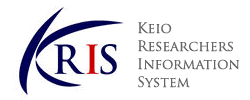-
Affiliation
-
School of Medicine (Shinanomachi)
-
Position
-
Associate Professor

KEIO RESEARCHERS INFORMATION SYSTEM |
Details of a Researcher
このページはJavascriptを使用しています。すべての機能を使用するためにはJavascript を有効にする必要があります。
Hirano, Jinichi
|
|
|
Katayama N., Shinagawa K., Hirano J., Kobayashi Y., Nakagawa A., Umeda S., Kamiya K., Tajima M., Amano M., Nogami W., Ihara S., Noda S., Terasawa Y., Kikuchi T., Mimura M., Uchida H.
Translational Psychiatry 15 ( 1 ) 267 2025.12
ISSN 2158-3188
Ishikawa Y., Oishi N., Kyuragi Y., Hatakoshi M., Hirano J., Noda T., Yoshihara Y., Ito Y., Miyata J., Nemoto K., Fujita Y., Igarashi H., Takahashi K., Murakami S., Kanno H., Izumi Y., Takamiya A., Matsumoto J., Kodaka F., Nakagome K., Mimura M., Murai T., Suwa T.
Molecular Psychiatry 30 ( 6 ) 2653 - 2664 2025.06
ISSN 13594184
Momota Y., Bun S., Hirano J., Kamiya K., Ueda R., Iwabuchi Y., Takahata K., Yamamoto Y., Tezuka T., Kubota M., Seki M., Shikimoto R., Mimura Y., Kishimoto T., Tabuchi H., Jinzaki M., Ito D., Mimura M.
Scientific Reports (Scientific Reports) 14 ( 1 ) 7633 2024.12
ISSN 2045-2322
The status of MRI databases across the world focused on psychiatric and neurological disorders
Tanaka S.C., Kasai K., Okamoto Y., Koike S., Hayashi T., Yamashita A., Yamashita O., Johnstone T., Pestilli F., Doya K., Okada G., Shinzato H., Itai E., Takahara Y., Takamiya A., Nakamura M., Itahashi T., Aoki R., Koizumi Y., Shimizu M., Miyata J., Son S., Aki M., Okada N., Morita S., Sawamoto N., Abe M., Oi Y., Sajima K., Kamagata K., Hirose M., Aoshima Y., Hamatani S., Nohara N., Funaba M., Noda T., Inoue K., Hirano J., Mimura M., Takahashi H., Hattori N., Sekiguchi A., Kawato M., Hanakawa T.
Psychiatry and Clinical Neurosciences 78 ( 10 ) 563 - 579 2024.10
ISSN 13231316
Glymphatic system dysfunction in mood disorders: Evaluation by diffusion magnetic resonance imaging
Ueda R., Yamagata B., Niida R., Hirano J., Niida A., Yamamoto Y., Mimura M.
Neuroscience 555 69 - 75 2024.09
ISSN 03064522
The mechanisms of electroconvulsive therapy : a multimodal longitudinal study.
Hirano, Jinichi
科学研究費補助金研究成果報告書 2021
Source-based morphometryを用いた機械学習モデルでの神経認知障害のアミロイドβ予測
百田 友紀, 文 鐘玉, 平野 仁一, 神谷 慶, 上田 亮, 岩渕 雄, 高畑 圭輔, 山本 保天, 手塚 俊樹, 窪田 真人, 関 守信, 色本 涼, 三村 悠, 岸本 泰士郎, 田渕 肇, 陣崎 雅弘, 伊東 大介, 三村 將
Dementia Japan ((一社)日本認知症学会) 37 ( 4 ) 657 - 657 2023.10
ISSN 1342-646X
【革新脳と関連プロジェクトから見えてきた新しい脳科学】ヒト疾患研究 a)精神疾患 精神疾患とイメージング研究
平野 仁一, 三村 將
生体の科学 ((公財)金原一郎記念医学医療振興財団) 73 ( 5 ) 452 - 453 2022.10
ISSN 0370-9531
工藤 駿, 高宮 彰紘, 平野 仁一, 三村 將
神経心理学 (日本神経心理学会) 38 ( 3 ) 216 - 221 2022.09
ISSN 0911-1085
Prolonged Post-Electroconvulsive Therapy Delirium Controlled with Donepezil
Takamiya A., Sawada K., Hirano J., Mimura M., Kishimoto T.
Journal of ECT (Journal of ECT) 35 ( 3 ) E29 - E30 2019.09
ISSN 10950680
【ニューロモデュレーション治療の可能性】精神疾患に対するニューロモデュレーション
高宮 彰紘, 岸本 泰士郎, 平野 仁一, 山縣 文, 三村 將
精神科 ((有)科学評論社) 34 ( 6 ) 551 - 556 2019.06
ISSN 1347-4790
認知症早期診断に向けた人工知能によるあたらしい網膜イメージングシステムの開発
Grants-in-Aid for Scientific Research, Grant-in-Aid for Scientific Research (C), No Setting
電気けいれん療法の治療効果発現におけるγ帯域神経活動が与える影響の解明
MEXT,JSPS, Grant-in-Aid for Scientific Research, Grant-in-Aid for Scientific Research (C), Principal investigator
人工知能による高齢者の不安全運転の予測モデルの確立と神経基盤の解明
Grants-in-Aid for Scientific Research, Grant-in-Aid for Scientific Research (B), No Setting
The mechanisms of electroconvulsive therapy: a multimodal longitudinal study.
MEXT,JSPS, Grant-in-Aid for Scientific Research, HIRANO Jinichi, Grant-in-Aid for Scientific Research (C), Principal investigator
LECTURE SERIES, PSYCHIATRY
2025
LECTURE SERIES, PSYCHIATRY
2024
LECTURE SERIES, PSYCHIATRY
2023
LECTURE SERIES, PSYCHIATRY
2022
LECTURE SERIES, PSYCHIATRY
2021